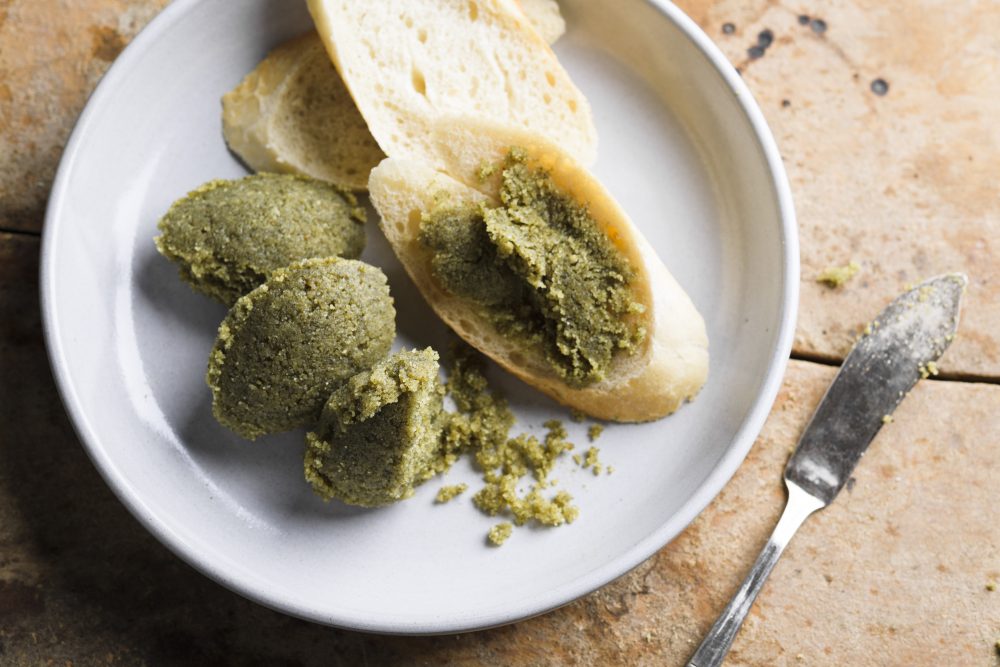
A Savory Spread from a Sweet Squash
In Croatia, pumpkin seeds and their darkly rich oil are used widely in cooking. The toasty, savory oil is used both for cooking and finishing dishes, while the seeds frequently are baked into quick breads and pureed into soups. We tasted our favorite use at Bedem, an upscale restaurant in Varaždin, where chef and co- owner Zlatko Novak used both the oil and seeds to make namaz od bučinih, a bold, chunky-smooth spread for bread. Though pumpkin seed oil isn’t common in the U.S., we were able to make a similar spread using olive oil. To make, in a food processor combine 1 cup toasted pumpkin seeds, 1 small shallot, 3 tablespoons extra- virgin olive oil, 1 garlic clove, 1 teaspoon cider vinegar, ½ teaspoon kosher salt and ¼ teaspoon ground black pepper. Process until mostly smooth, about 30 seconds.
The Briny Taste of the Greek Seaside
For centuries, the Greeks have added pops of briny, herbal flavor to their cooking by pickling the stems, leaves and seed pods of a plant known as sea fennel or rock samphire, which grows along the coastline. The flavor is a blend of dill, fennel and capers, but without any harshness. Zēlos, an online shop that specializes in artisanal Greek foods, offers Tragano Greek Organics Sea Fennel, which is packed in a brine of water, sea salt and organic vinegar. We like it minced and mixed into tuna salad or tartar sauce or as a garnish for deviled eggs. We also shallow-fried some In neutral oil for about 2 minutes, giving it a crispy texture and nutty flavor. Sprinkle it on steamed fish or sashimi, stir it into rice with sesame seeds, or scatter it over a Greek omelet with shrimp and feta. Zelosgreekartisan.com sells 8.4-ounce jars for $14.
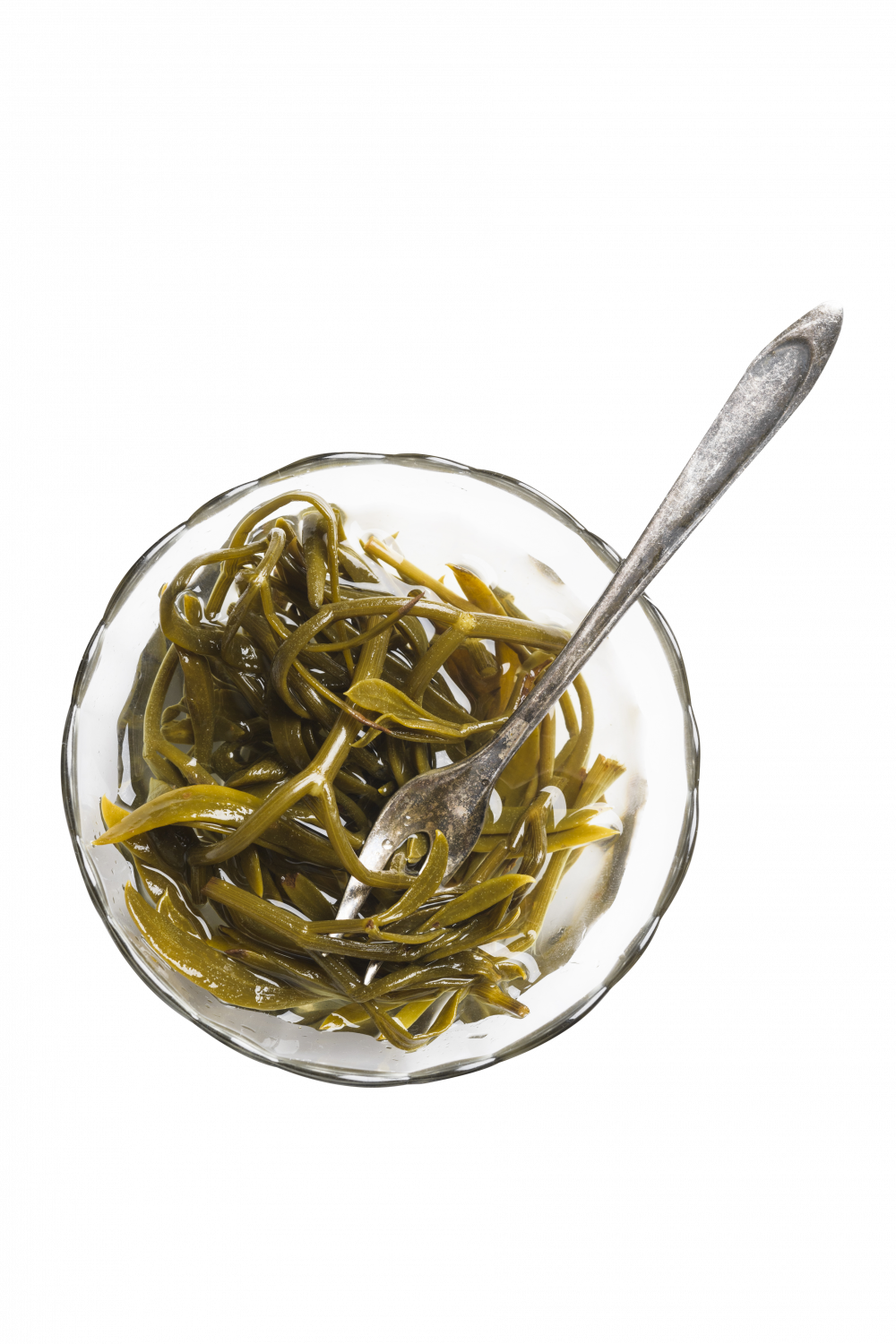
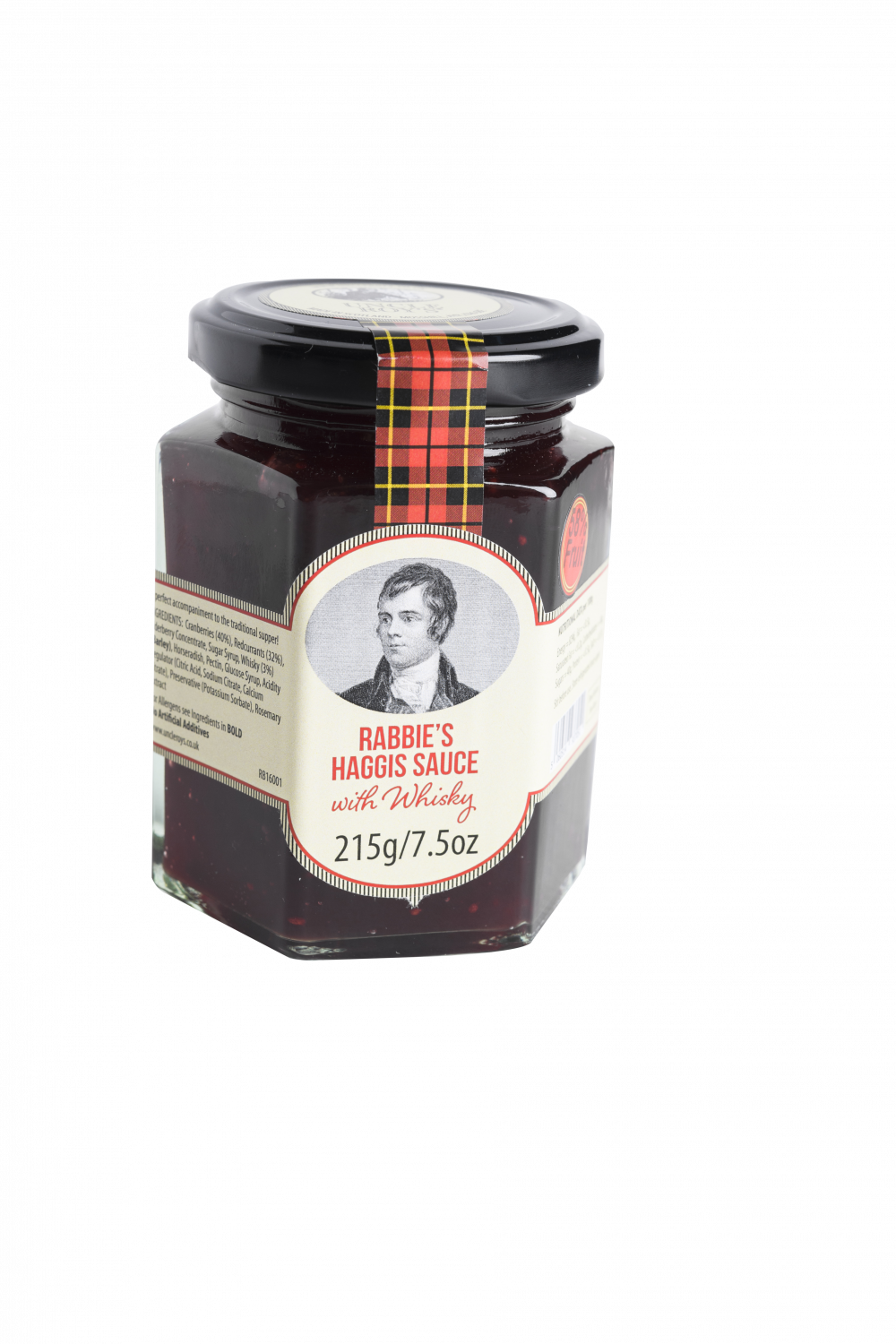
Saucing Haggis and Beyond
Truthfully, we don’t often find ourselves boiling up haggis for dinner here at Milk Street. But we were intrigued by Rabbie’s Haggis Sauce, a savory compote made with red currants and cranberries intended to be eaten alongside the Scottish mash of oats and offal. We love the compote’s pronounced fruity taste and the way it is balanced by kicks of mustard and horseradish. Rather than haggis, we like it with roast pork or as a dipping sauce for crispy roasted chicken. It also would be great on a bagel with cream cheese. Amazon sells 7½-ounce jars for about $6.
A Chili Sauce with as Much Crunch as Kick
Japanese cooks recently learned to love a new condiment inspired by Chinese chili oil. Called taberu rayu and introduced in Japan only about 10 years ago, the chunky, bright red sauce combines savory, crunchy bits with a boldly red and lightly peppery oil. It adds texture as well as a rich, mildly spicy heat. The mix is made by blending fried garlic, onion, sesame seeds and sometimes almonds with chili pepper-infused oil, typically sesame or canola. We love it on rice, noodles and tofu, and have heard that in Japan it’s even spooned over hamburgers. Umamimart.com sells 3.88-ounce jars for $6.49.
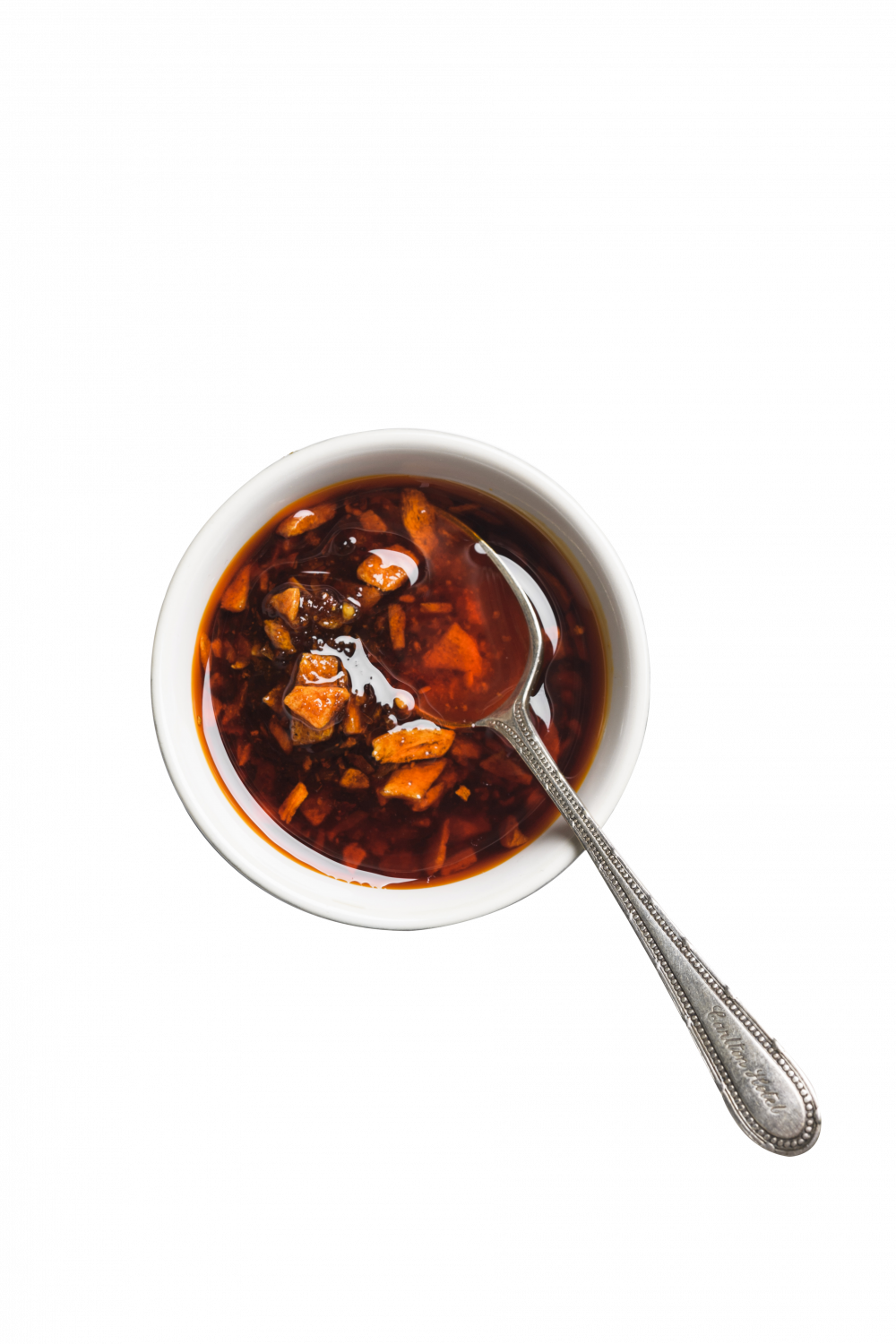

Punctuate Your Zest
While exploring housewares shops in Zagreb, Croatia, we found a fresh—and stylish—way to slice zest from citrus. The Apostrophe, by Italian home goods designer Alessi, is a pleasantly heavy-for-its-size stainless steel teardrop shaped like its namesake. Pull its fishhook barb through the skin of citrus fruit to cleanly slice thick strips of the peel perfect for garnishing cocktails or candying. Available at Alessi.com for $32.
Bulgaria’s Bold Finishing Salt
In Bulgaria, cooks frequently reach for a boldly flavored seasoned salt called sharena sol. Though plenty of variations exist, many include summer savory and paprika, as well as fenugreek and thyme. We first read about it in Caroline Eden’s “Black Sea” cookbook, where she says it most often is used on eggs, bread, chicken and fish. Inexpensive packets are sold on FindBGFood.com, but a good version also can easily be made from spice cabinet staples. We like it on roasted potatoes and cauliflower, steamed vegetables, lamb stew and mixed into ground meat for keftedes. To make, in a small, dry skillet over medium-low, toast 2 tablespoons sweet paprika and 2 teaspoons cumin seed until fragrant, 1 to 2 minutes. Cool, then stir in 1 tablespoon dried thyme and 2 teaspoons kosher salt. Store in an airtight container for up to six months.
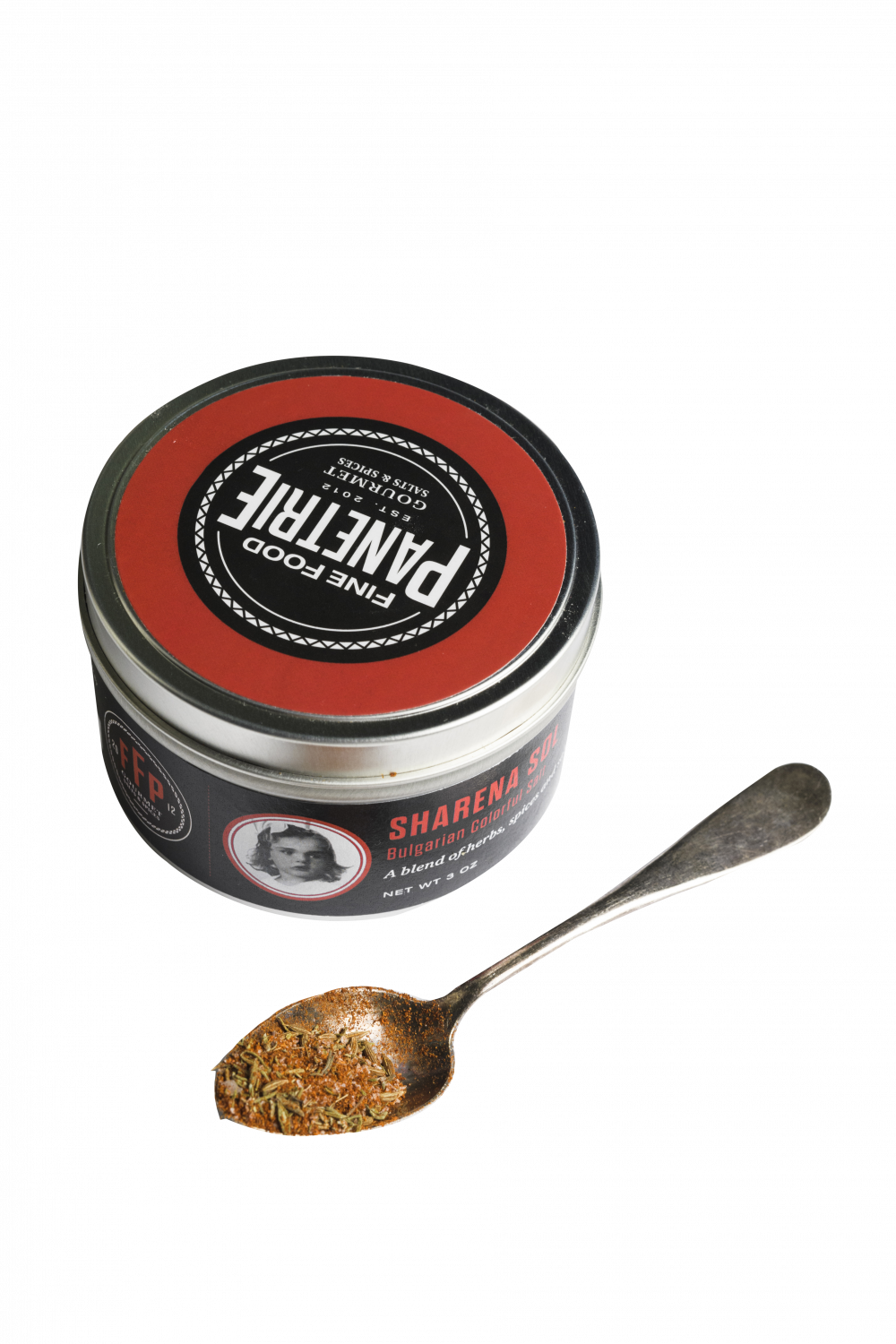
The deep, layered flavors that define so much of Indian cooking often can be credited to the use of masalas, or spice blends. Typically used in combination with single spices and aromatics, masalas (of which there are countless variations across India) are a one-stroke solution for adding complexity to a dish. Cooks control how it flavors the food by when they add it— opting to toast it in a dry skillet, bloom it in hot fat, add it to simmering liquid, sprinkle it on at the finish, or some combination. Among the best-known masalas is garam masala, which roughly translates as warming spices. Though you can buy it and other blends, Indian cooks know fresh is best and often make their own by toasting and grinding whole spices. In Mumbai, we learned a simple version of garam masala that offers deep, warm flavor without heat. In addition to curries, we like to use it to flavor coconut milk- based sauces, stir it into cooked rice, or mix it with salt and brown sugar for a rub for salmon or chicken. To make your own, in a dry skillet over medium-low, combine 1 tablespoon fennel seeds, 1 tablespoon whole green cardamom pods, 2 teaspoons black peppercorns, 1 teaspoon whole cloves and 2 small cinnamon sticks, broken into pieces. Toast, stirring, until fragrant and beginning to lightly brown, 2 to 3 minutes. Transfer to a plate to cool. Grind in a spice grinder until reduced to a fine powder. To preserve freshness, store in a tightly sealed jar for up to a month.



